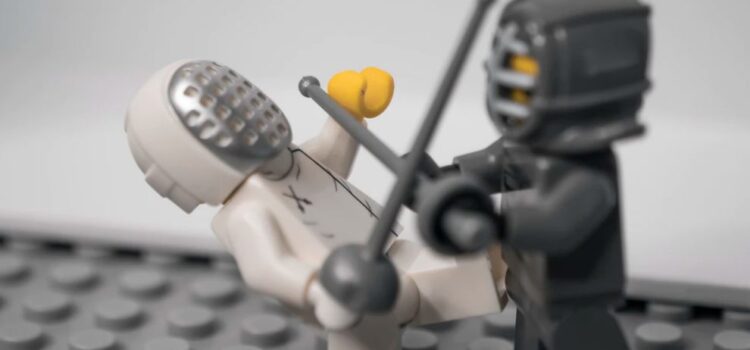

This article is an excerpt from the Shortform book guide to "The Ride of a Lifetime" by Bob Iger. Shortform has the world's best summaries and analyses of books you should be reading.
Like this article? Sign up for a free trial here .
What happened when Disney bought Fox? How did Comcast almost steal the sale?
In 2017, the founder of Fox asked the CEO of Disney if he would be interested in buying his company. Disney CEO Bob Iger knew if Disney bought Fox, they would grow exponentially. However, Comcast caught wind of the transaction and swooped in with a much higher bid.
Keep reading to learn how Disney bought Fox and won against Comcast.
How Disney Bought Fox
In August 2017, Rupert Murdoch asked Disney CEO Bob Iger to visit him at his winery in Bel Air. Murdoch was then the founder and biggest owner of News Corp and 21st Century Fox, which included the 20th Century Fox film studio, the Fox television network, and a bevy of other studios and cable channels.
At their meeting, Murdoch commiserated about the threats to their media companies, particularly from big tech companies, and how much scale mattered in surviving in the environment. These threats were exactly what Iger and Disney had been defending against with their acquisitions and their own streaming service. But the difference between their two companies, according to Murdoch, was that 21st Century Fox didn’t have scale, but Disney did.
It soon became clear that Murdoch was suggesting that Disney should buy 21st Century Fox. The implication was that his company’s shareholders, of which he was the largest, would benefit more from being part of Disney and building a strong united front than they would by standing alone. The possibility was intriguing to Iger, but it would represent a deal possibly ten times bigger than Pixar’s $7 billion sale.
Iger and his team started studying what assets they could acquire if Disney bought Fox, and what it would mean for Disney. First, they knew they couldn’t buy the entire company—antitrust regulation would prevent them from owning the Fox television network or their sports networks, and Murdoch liked Fox News too much to let it go (let alone the political muddying with the ideologically clean Disney). The assets left included their movie studio, a major stake in National Geographic, their international operations, and stakes in streaming service Hulu and Sky (Europe’s largest satellite broadcasting company).
Next they had to figure out what these assets were worth to Disney. This meant projecting not just their performance as a standalone company, but also the gains from combining with Disney. This included reducing costs through efficiencies and in growth through synergies, such as Disney using Fox’s presence in India and Fox bringing in great content talent. If Disney bought Fox, it looked like the growth opportunity was in the billions. It could be a really good deal.
Competing With Comcast
Having done their analysis, Disney offered to buy Fox for $28 a share, or $52.4 billion, and maintained that they couldn’t go any higher.
Around that time, word leaked of the possible deal, and Comcast put in its own significantly higher offer. Iger wasn’t intimidated—Comcast would face significantly more antitrust scrutiny (given that they already owned NBC-Universal and one of the nation’s largest distribution networks). He thought the Fox board and shareholders would prefer the higher likelihood of Disney’s deal, even if it were lower in value.
Furthermore, Iger was willing to walk away from the deal. Fox would be a major accelerant in Disney’s strategy, but integrating the two massive companies would be wearying, and there were still plenty of unknowns about how the combined entity would succeed. Despite Murdoch’s insistence on $29 a share, Disney’s best offer was $28, and no higher.
At the end of November, Murdoch accepted their bid, and they announced that Disney bought Fox a few weeks later on December 14. This wasn’t a done deal—an acquisition of this size and importance required regulatory approval, which could take six months and still allowed for competing bids.
Notably, the media industry was watching for the outcome of an antitrust lawsuit blocking the merger of AT&T and Time Warner. If the lawsuit was upheld and the merger was deemed illegal, then Comcast would likely have little success in buying Fox. But if the lawsuit were overruled, then Comcast might pursue Fox with renewed vigor and make a higher bid for Fox.
Even still, Disney had to plan as though the deal were going to go through, and Iger began planning for the integration. Merging all the business units would be an organizational headache. So he asked himself—“If I were designing the combined company from scratch, how would it be organized?” He decided first on separating the content pieces (the movie studios and TV stations) from technology and operations (which included apps, distribution, data analysis, and sales). This would let creative people be creative and let the tech and operations people focus on distributing the content and making money. Then, the remaining businesses, like the theme parks and consumer products, went into a third group, “physical entertainment and goods.”
With this master structure worked out and approved by his deputies, Iger began the difficult challenge of deciding who would lead which business units. He started flying around the world meeting with Fox and Disney executives.
The Final Battle With Comcast
In June 2018, the event Disney feared came to pass: the AT&T-Time Warner lawsuit was struck down by the court judge, and AT&T could proceed with buying Time Warner. The next day, Comcast issued a new offer: $35 per share, or $64 billion, in cash. This was a huge premium over Disney’s $28 per share, and the fact that it was all-cash rather than a stock transaction made the offer even sweeter. Disney had spent six months deciding how to integrate Fox, and it might all be a waste.
The Fox board was due to vote on the Comcast offer in a week, and Disney had a few options to bid in response. It could issue a lower bid like last time, hoping that Fox would still prefer Disney due to lower risk of a regulatory hiccup. Alternatively, it could match Comcast’s offer. Lastly, it could exceed Comcast’s offer and try to win outright. Disney’s execs and bankers counseled Iger to go low or match, but Iger wanted a clearly better offer, and not just an incrementally better one—a significantly better offer that would be hard to match.
Two days before the Fox board meeting, the Disney team flew to London in secret and met with Murdoch. They proposed $38 per share—$3 higher than Comcast’s offer and $5.5 billion more—in half cash and half stock. The next day, Murdoch brought the bid to the board, and they approved Disney’s offer, not Comcast’s. Disney bought Fox and this came as a surprise to Comcast.
Soon thereafter, Disney tried to get a clear answer from the Department of Justice on the likelihood of their approving the deal. The DoJ responded that if Disney sold the sports networks, they wouldn’t block the acquisition. This gave Disney an even greater advantage over Comcast.
The final Fox shareholder vote was due in late July 2018, and Comcast could still return with a higher bid. But Comcast announced it was dropping its campaign to buy Fox and congratulated Disney. The deal was approved by Fox shareholders.
It still wasn’t totally done. Disney needed to secure regulatory approval globally, including in China, Russia, India, and the EU. It took months, but in March 2019, nineteen months after the initial meeting with Murdoch, they completed the deal. Disney was now one of the largest media entertainment companies in the world.

———End of Preview———
Like what you just read? Read the rest of the world's best book summary and analysis of Bob Iger's "The Ride of a Lifetime" at Shortform .
Here's what you'll find in our full The Ride of a Lifetime summary :
- How Bob Iger went from television crew member to CEO of Disney
- The 10 major principles behind Iger's management style and success
- How Iger resuscitated Disney Animation by buying Pixar






